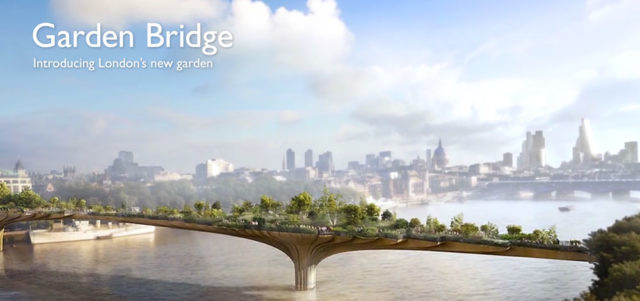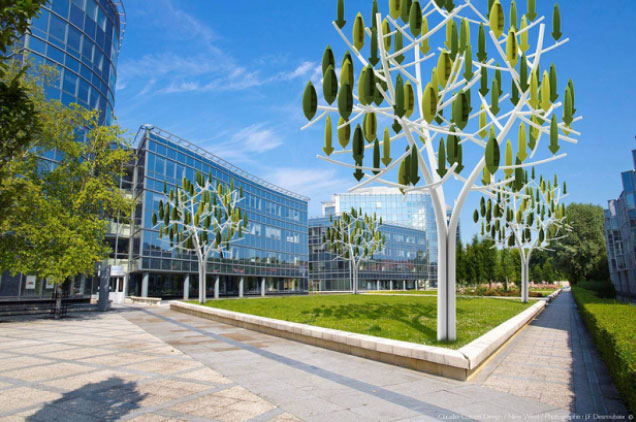Cities are the Battleground to Combat Climate Change
April 7, 2015 — Blog
According to a United Nations report, cities will become responsible for 75 per cent of greenhouse gas emissions by 2030. However, local governments have the opportunity to play a major role in curbing this trend and combatting climate change.
Certain cities around the world are already demonstrating positive action in this realm. The establishment of clear mitigation targets is key. For example, the City of Paris is organizing the “Summit of Local Governments for Climate” during the next United Nations Climate Change Conference, which will be held in the French capital in December 2015 1. This is one of the many events that signal the positive commitment of the City of Paris and of the French Government on climate change mitigation. Other notable events include the Conference on Energy in Bordeaux in January 2015 and the “Climate and Territories” Summit in Lyon in July 2015.
Bringing nature back into the city is one effective way of building a cleaner, more pleasant and sustainable urban environment. From planting fruit bearing trees to installing green walls and urban farms, city planners are increasingly developing green initiatives within cities. Citizens are often strong advocates of such initiatives. Crowdsourced ideas for the Participatory Budget in Paris and the campaign for Thomas Heatherwick’s Garden Bridge in London highlight the popularity of projects involving nature.

On a broader level, cities are re-thinking the design of urban infrastructure to address major challenges such as biodiversity loss, urban heat island effects and climate change risks. City councils are creating business cases to capture many benefits that green infrastructure can bring. This includes improving quality of life and health of residents, creating an attractive place to invest, increasing tourism and producing food.
It is evident that public-private partnerships will be a driving force for building greener cities and sharing best practice. An inspiring example is the Danish Cleantech Hub2, a public-private partnership between Denmark and New York City with the goal of scaling up sustainable projects. In the aftermath of the 2012 Superstorm Sandy, New York woke up to the call of climate change adaptation. New York decided to look to Denmark, the nation that often tops rankings for environmental sustainability. This US-Denmark public-private collaboration is designed to help New York capitalize on Denmark’s technological savvy and more than 2,200 cleantech companies. The physical headquarters in New York gives local entrepreneurs, leaders and organizations access to Danish know-how, while providing Danish companies entry to the New York marketplace.
Whilst such partnerships make headway in the battle for climate change, innovators and startups are also playing a vital role. Take the enterprise NewWind,3 which has developed a revolutionary tree-shaped wind turbine called “Arbre à Vent”. The tree’s biomimetic leaves act as many little wind turbines, which do not cause noise pollution thanks to their vertical axes. The City of Paris will be installing one of these wind turbines in Place de la Concorde in the heart of the city in the course of 2015. This is a symbolic move, since the historic square is the location where the first Parisian public street light was installed in 1844. It is also a bold way of gauging public attitudes towards wind turbines, by placing one in the heart of a city.

Another startup, CarbonDiem4, focuses on raising citizens’ awareness about their ecological impact. The aim of the project is to enable smartphones to be used as sensors to measure carbon footprint. The CarbonDiem smartphone application detects the user’s mode of transport in real-time by studying the speed, position and pattern of movement. Each mode has its own emissions multiplier. When multiplied by the distance traveled, the carbon footprint for a specific journey can be calculated. This application is a powerful catalyzer for increasing people’s environmental awareness and their understanding on how to move efficiently around the city.
These promising examples point in the same direction: cities are the next battleground to combat climate change. The Organisation for Economic Co-operation and Development goes as far as saying that it is in urban areas that the fight against climate change will be lost or won5. If we want to win this battle, then we need to ensure that cities are equipped to fight it. For this to happen, mayors and urban sustainability experts must receive financial support from central governments, international donors and the private sector.
Making existing infrastructure climate resilient and sustainable is a mighty challenge that should be given the utmost priority if we are to ensure urban security and economic growth in times of climate change. We are witnessing encouraging signs of new partnerships and resources to fight climate change. We need to cultivate these, and foster even more efforts, from all sectors and from all citizens. In this way, cities can help lead the way in building a greener, healthier and more sustainable planet.